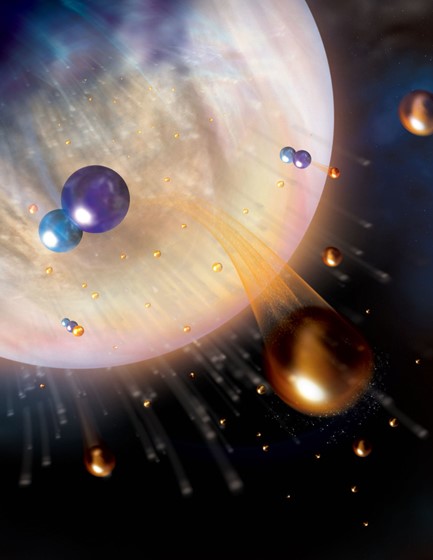Media release
From:
2. Planetary science: How Venus lost its water
A new possible explanation for how present-day Venus is almost devoid of water, which may resolve longstanding discrepancies in previous theories, is described in a modelling study published in Nature this week. The proposed mechanism has been overlooked for more than 50 years, in part due to design limitations in previous Venus spacecraft instruments.
Despite being a close neighbour and being similar in size and source material to Earth, Venus is extremely dry. Research has suggested that water from Venus’s once steam-dominant atmosphere was lost to space via a mechanism called hydrodynamic outflow. However, this mechanism cannot remove all the water needed to explain current conditions, and other studied escape mechanisms are too slow to complete the process of water removal.
Michael Chaffin, Eryn Cangi, and colleagues propose an explanation that can close this gap: a reaction called HCO+ dissociative recombination, which produces more escaping hydrogen than previously suggested processes. HCO+ dissociative recombination would nearly double the rate of water loss to space from Venus and would resolve longstanding difficulties in explaining measured water abundances and isotope ratios on Venus, the authors suggest. Future Venus spacecraft missions need to measure HCO+ abundances to determine if HCO+ dissociative recombination is indeed the dominant mechanism for water loss, the authors conclude.



 International
International


